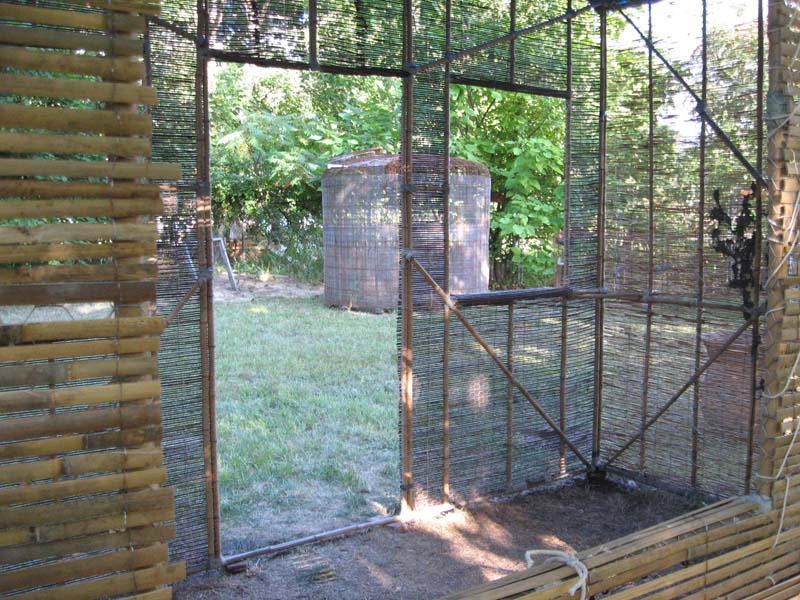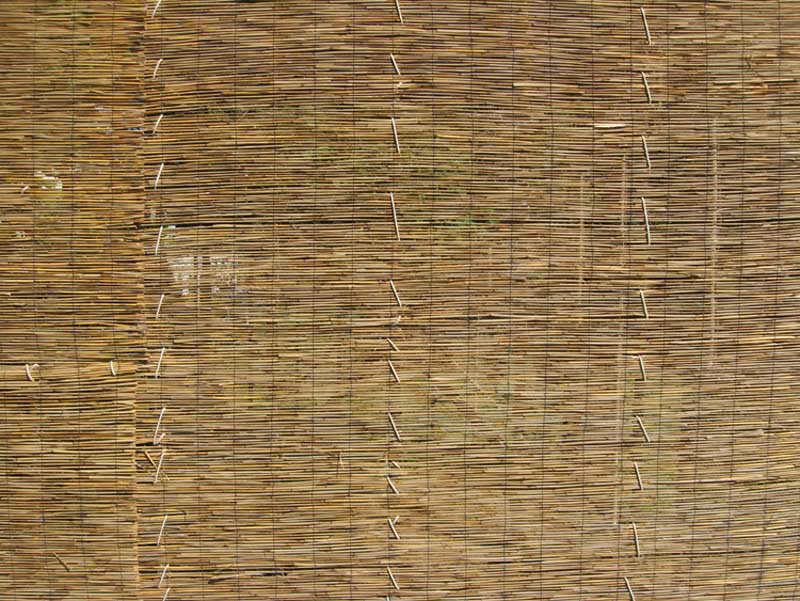

This stitching was accomplished with one person on each side of the wall passing the cotton rope to the person on the other side, a pair of needle-nose pliers made it easy to grasp the end of the rope as it was passed through. The job requires attention to positioning and keeping the stitching tight but is otherwise a fun social opportunity for each stitching worker pair.
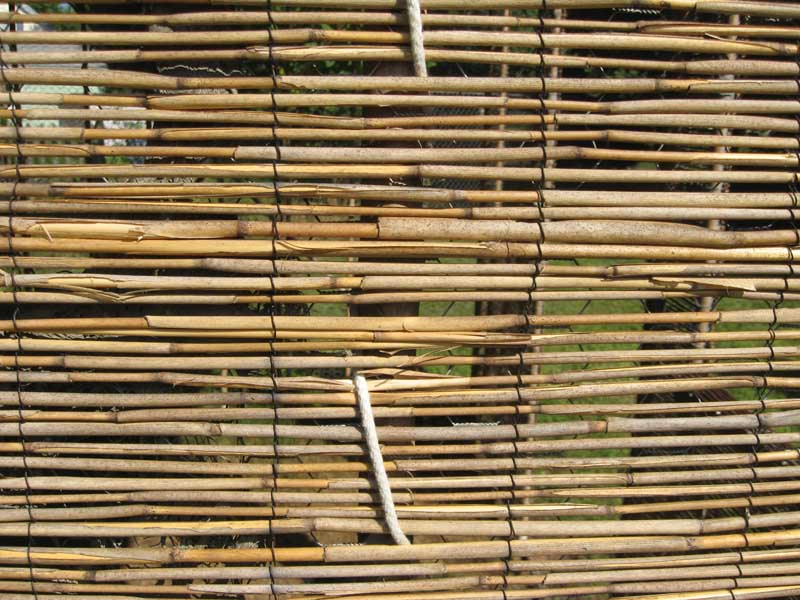
Examine this corner where the reed and willow meet, notice that the material is held back from the corner slightly to make it easier to push plaster inward with the pump action from the palm of a gloved hand.
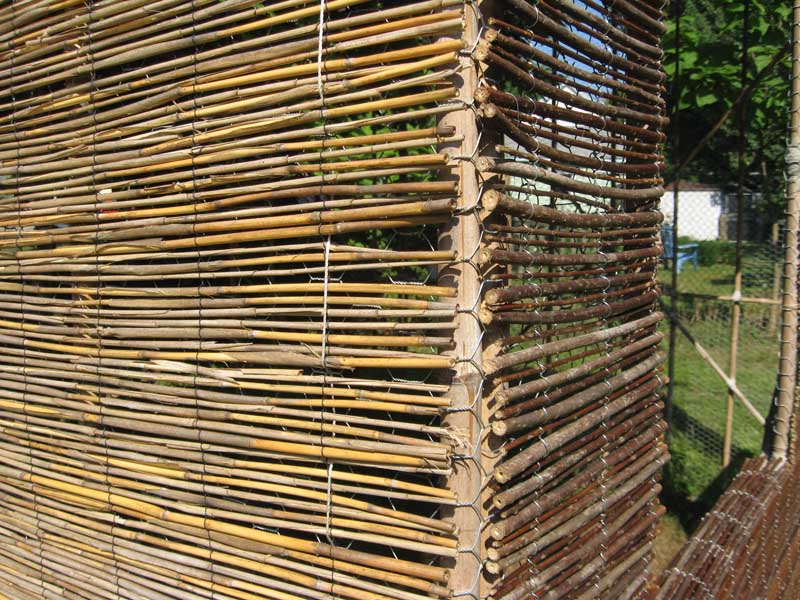
Cotton string with a made-on-the-job bent eye needle is more rapid than passing the rope back and forth but requires more attention to tension and knots. The thinest cotton rope, 32mm (1/8"), is fun to work with. Cotton string is better than nylon.
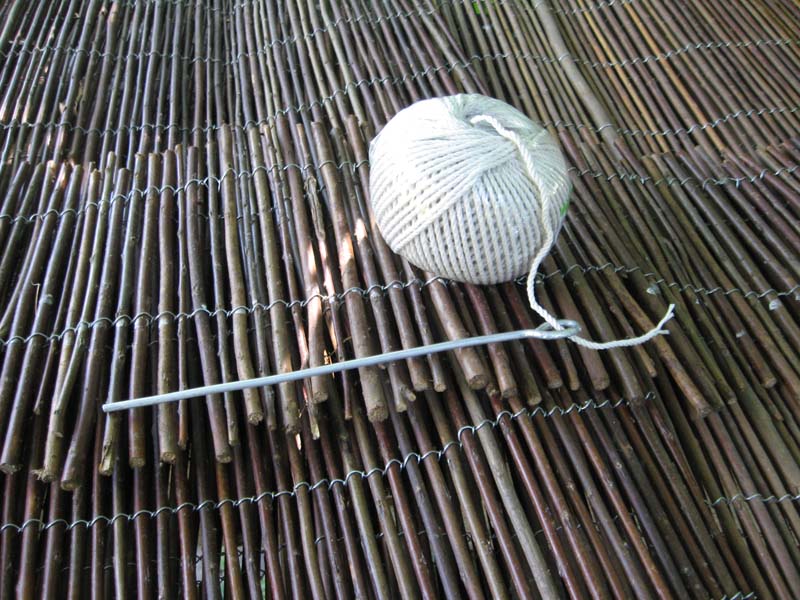
Looking through the window of a wall sheathed with split bamboo, the far corner is inside where the reed and willow meet, this is the same corner viewed from the outside in photo #3 above. The water tank armature in the background of this photo was used as the model for the ferrocement.com water tank construction manual. Here it is plain to see that the basic techniques for traditional steel reinforced ferrocement and biological fiber reinforced space-age mud and wattle style ferrocement are exactly the same.
